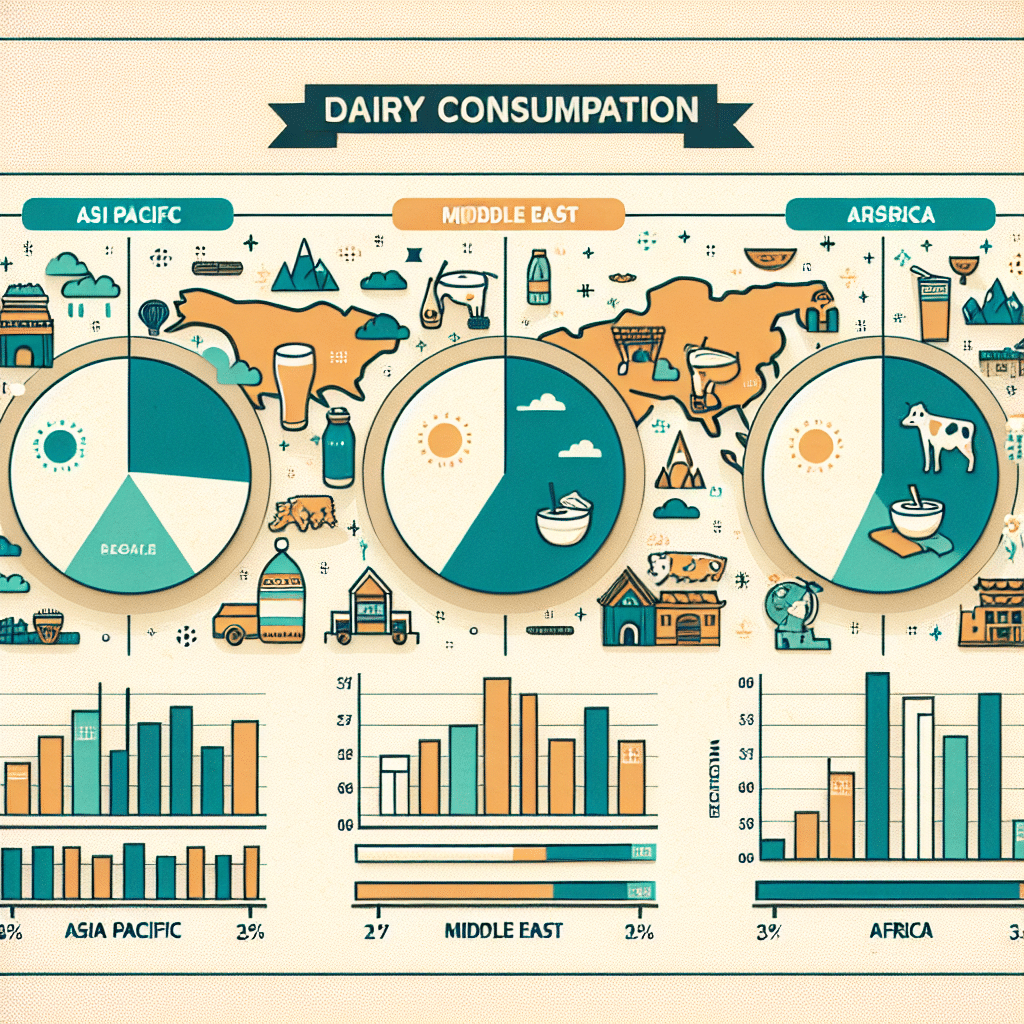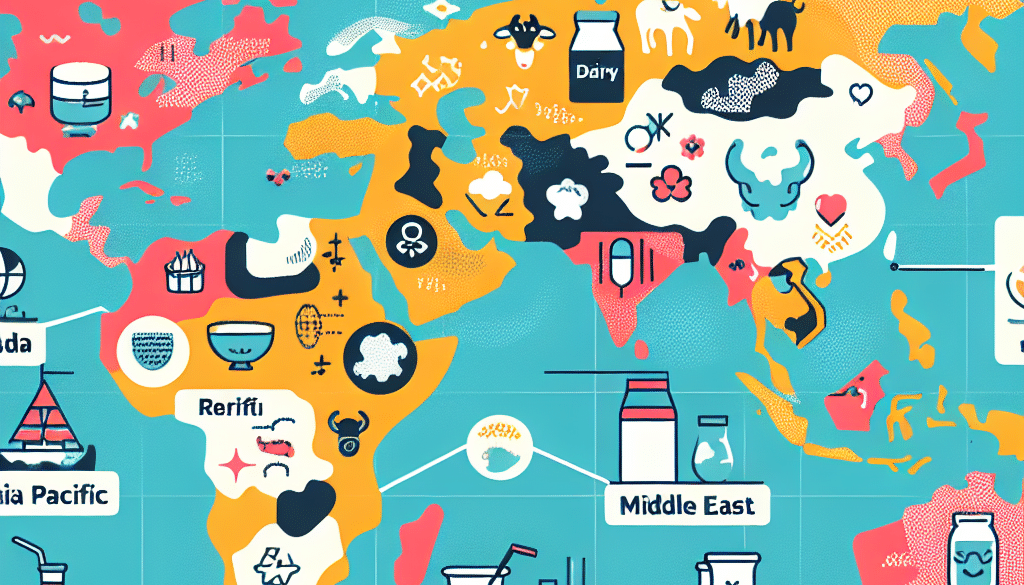Dairy Trends in Asia Pacific, the Middle East and Africa
-
Table of Contents
- Dairy Trends in Asia Pacific, Middle East, and Africa: A Comprehensive Analysis
- 1. The Rise of Health-Conscious Consumers
- 2. Plant-Based Alternatives Gaining Ground
- 3. Innovation in Dairy Products
- 4. The Impact of Technology and Sustainability
- 5. The Role of E-Commerce and Home Delivery
- 6. Case Studies and Success Stories
- 7. Challenges and Opportunities
- Conclusion
- ETprotein: Catering to Emerging Dairy Trends with High-Quality Protein Products
Dairy Trends in Asia Pacific, Middle East, and Africa: A Comprehensive Analysis

The dairy industry is experiencing a dynamic shift, particularly in the Asia Pacific, Middle East, and Africa (APMEA) regions. These areas are witnessing significant changes in consumer preferences, technological advancements, and innovative product developments. This article delves into the latest dairy trends shaping the industry in these regions, offering valuable insights into the evolving landscape of dairy consumption and production.
1. The Rise of Health-Conscious Consumers
In the APMEA regions, there is a growing segment of health-conscious consumers who are increasingly aware of the nutritional benefits of dairy products. This shift is driving demand for products that are not only high in quality but also offer health benefits such as fortified with vitamins and minerals, low in fat, or enriched with probiotics.
- Functional dairy products are gaining popularity, with innovations such as lactose-free milk and dairy beverages infused with additional health benefits.
- There is a rising trend of organic dairy products as consumers seek cleaner labels and more natural ingredients.
2. Plant-Based Alternatives Gaining Ground
While traditional dairy remains popular, plant-based alternatives are rapidly gaining market share. This trend is particularly strong among the lactose intolerant population and those adopting vegan or flexitarian diets.
- Plant-based milk alternatives made from soy, almond, oats, and rice are becoming mainstream in supermarkets and cafes.
- Dairy-free cheese and yogurt have also seen significant growth, catering to both health-conscious consumers and those with dietary restrictions.
3. Innovation in Dairy Products
Dairy producers in the APMEA regions are constantly innovating to meet the changing consumer demands. This includes the development of new flavors, textures, and packaging that appeal to a diverse consumer base.
- Value-added dairy products such as flavored milk, drinkable yogurts, and cheese snacks are on the rise.
- Convenient packaging solutions like single-serve pouches and resealable containers are becoming more prevalent.
4. The Impact of Technology and Sustainability
Technological advancements and sustainability are key drivers in the dairy industry’s evolution. Dairy farms are adopting modern technologies to increase efficiency and reduce their environmental footprint.
- Smart farming techniques, including precision agriculture and automation, are being implemented to enhance productivity.
- Sustainable practices such as water recycling and renewable energy usage are becoming more common in dairy processing.
5. The Role of E-Commerce and Home Delivery
The rise of e-commerce platforms and home delivery services has transformed the way consumers purchase dairy products. This trend has been further accelerated by the COVID-19 pandemic.
- Online grocery shopping has made it easier for consumers to access a wide range of dairy products from the comfort of their homes.
- Subscription-based delivery services for milk and other dairy essentials are gaining popularity, offering convenience and regularity.
6. Case Studies and Success Stories
Several dairy brands in the APMEA regions have successfully adapted to these trends, launching innovative products and services that resonate with consumers.
- A leading dairy company in Asia introduced a high-protein, low-fat milk product that quickly became a market leader among health-conscious consumers.
- In the Middle East, a dairy brand launched a line of lactose-free milk and yogurt, catering to the region’s high prevalence of lactose intolerance.
- An African dairy cooperative implemented sustainable farming practices, significantly reducing water usage and carbon emissions, which improved their brand image and sales.
7. Challenges and Opportunities
The dairy industry in the APMEA regions faces challenges such as price volatility, supply chain disruptions, and competition from non-dairy alternatives. However, these challenges also present opportunities for innovation and growth.
- Investing in research and development can lead to the creation of novel dairy products that meet specific consumer needs.
- Building a sustainable supply chain can help companies mitigate risks and appeal to environmentally conscious consumers.
Conclusion
The dairy industry in the Asia Pacific, Middle East, and Africa is undergoing significant transformation. Driven by health-conscious consumers, the rise of plant-based alternatives, technological advancements, and the growing importance of e-commerce, the industry is poised for continued growth and innovation. Companies that can adapt to these trends and address the challenges head-on will be well-positioned to succeed in the evolving dairy landscape.
ETprotein: Catering to Emerging Dairy Trends with High-Quality Protein Products
As the dairy industry evolves, there is an increasing demand for high-quality protein ingredients that can enhance the nutritional profile of dairy products. ETprotein is well-positioned to meet this demand with its extensive range of organic bulk vegan proteins and L-(+)-Ergothioneine (EGT). Their products are ideal for fortifying dairy and dairy-alternative products, catering to the health-conscious consumer and those with dietary restrictions.
ETprotein’s offerings are characterized by a neutral taste, non-GMO, allergen-free attributes, and high purity levels, making them suitable for a wide range of applications in the food and beverage industry. By incorporating ETprotein’s products into their formulations, dairy companies can create innovative, nutritious, and sustainable products that align with current consumer trends.
About ETprotein:
ETprotein, a reputable protein and L-(+)-Ergothioneine (EGT) Chinese factory manufacturer and supplier, is renowned for producing, stocking, exporting, and delivering the highest quality organic bulk vegan proteins and L-(+)-Ergothioneine. They include Organic rice protein, clear rice protein, pea protein, clear pea protein, watermelon seed protein, pumpkin seed protein, sunflower seed protein, mung bean protein, peanut protein, and L-(+)-Ergothioneine EGT Pharmaceutical grade, L-(+)-Ergothioneine EGT food grade, L-(+)-Ergothioneine EGT cosmetic grade, L-(+)-Ergothioneine EGT reference grade and L-(+)-Ergothioneine EGT standard. Their offerings, characterized by a neutral taste, non-GMO, allergen-free attributes, with L-(+)-Ergothioneine purity over 98%, 99%, cater to a diverse range of industries. They serve nutraceutical, pharmaceutical, cosmeceutical, veterinary, as well as food and beverage finished product distributors, traders, and manufacturers across Europe, USA, Canada, Australia, Thailand, Japan, Korea, Brazil, and Chile, among others.
ETprotein specialization includes exporting and delivering tailor-made protein powder and finished nutritional supplements. Their extensive product range covers sectors like Food and Beverage, Sports Nutrition, Weight Management, Dietary Supplements, Health and Wellness Products, and Infant Formula, ensuring comprehensive solutions to meet all your protein needs.
As a trusted company by leading global food and beverage brands and Fortune 500 companies, ETprotein reinforces China’s reputation in the global arena. For more information or to sample their products, please contact them and email sales(at)ETprotein.com today.














